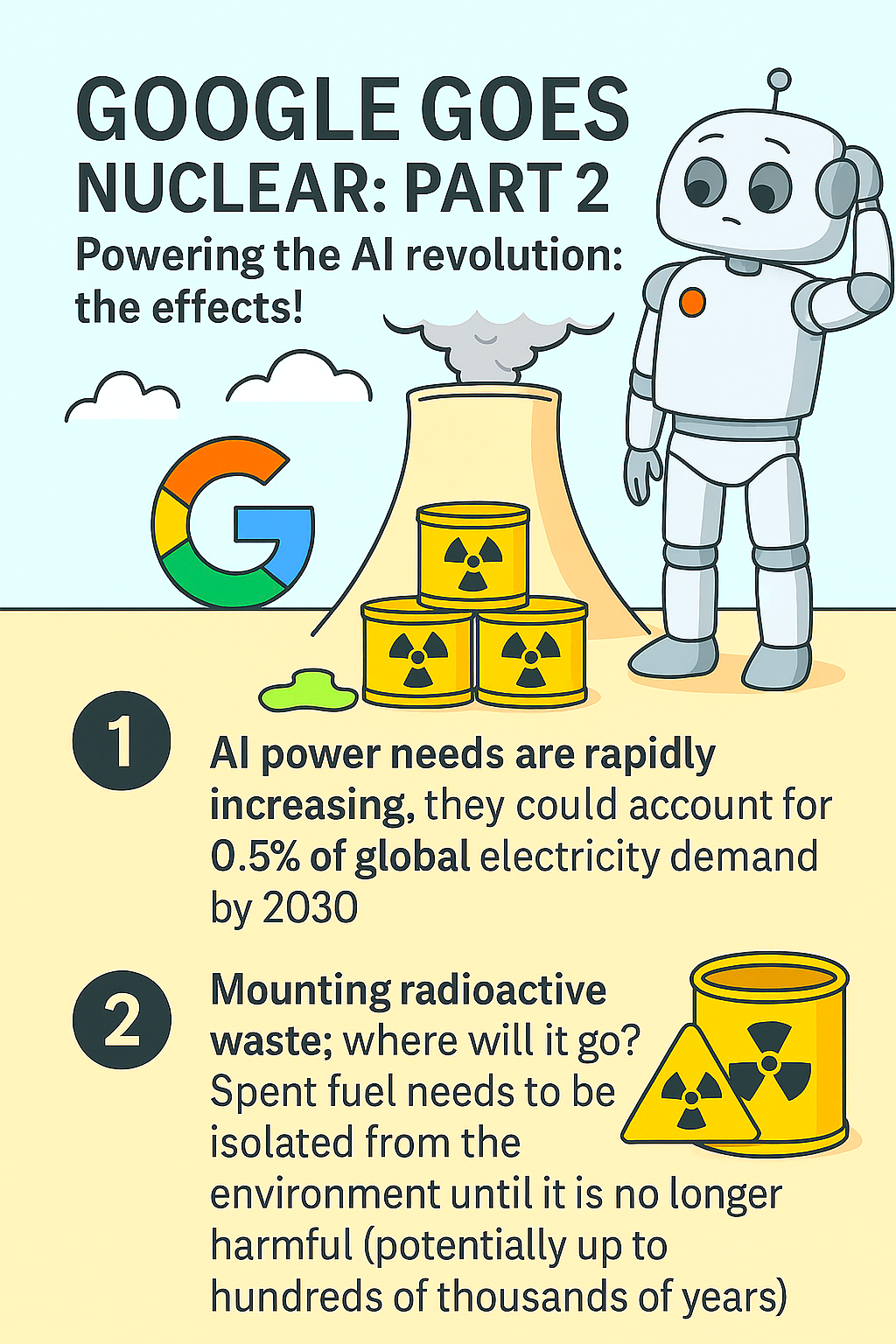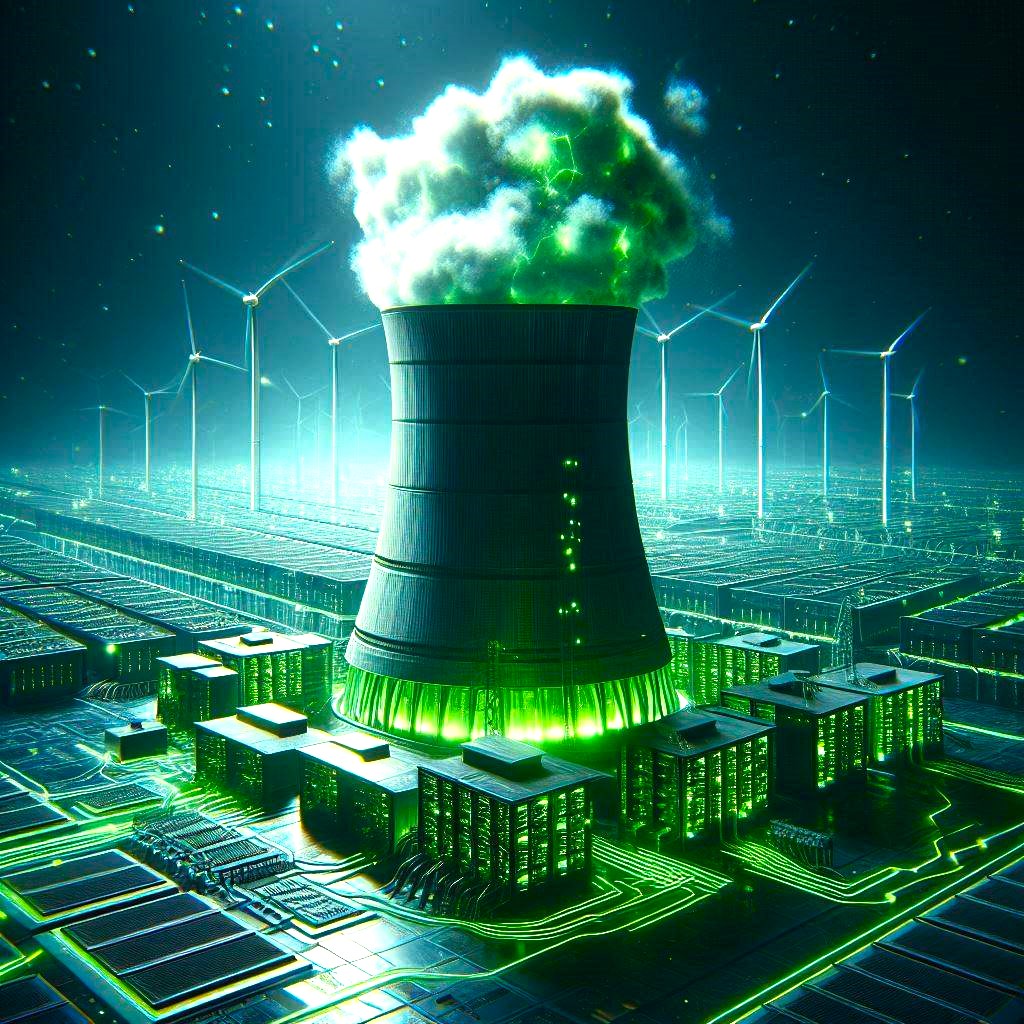Google’s nuclear pivot aligns with green energy goals—but contrasts sharply with Alaska’s oil expansion, which raises environmental concerns
Google’s move to restart the Duane Arnold nuclear plant in Iowa is part of a broader strategy to power its AI infrastructure with carbon-free energy.
Nuclear fission, while controversial, is considered a low-emissions source and offers round-the-clock reliability—something solar and wind can’t always guarantee.
By locking in a 25-year agreement with NextEra Energy, Google aims to meet its AI demands while staying on track for net-zero emissions by 2030.
Why Nuclear Fits the Green Energy Puzzle
Zero carbon emissions during operation make nuclear a strong contender for clean energy.
High energy density means a small footprint compared to solar or wind farms.
24/7 reliability is crucial for powering AI data centres, which can’t afford downtime.
Google’s plan reportedly includes exploring modular reactors and integrating nuclear into its broader clean energy mix.
However, nuclear isn’t without its critics.
Concerns include
Radioactive waste management and long-term storage.
High upfront costs and long construction timelines.
Public resistance due to safety fears and historical accidents.
Alaska’s Oil Recovery: A Different Direction
In stark contrast, the Trump administration has announced plans to open 82% of Alaska’s National Petroleum Reserve for oil and gas drilling.
This includes parts of the Arctic National Wildlife Refuge, home to polar bears, migratory birds, and Indigenous communities.
The move is framed as a push for energy independence and economic growth, but it’s drawing criticism for its environmental impact:
Habitat disruption for Arctic wildlife and fragile ecosystems.
Increased carbon emissions, undermining climate goals.
Reversal of previous protections, sparking legal and activist backlash.
The Bigger Picture
Google’s nuclear strategy represents a tech-led green energy evolution, while Alaska’s oil expansion reflects a traditional fossil fuel revival.
The juxtaposition highlights a growing divide in U.S. energy policy: one path leans into innovation and sustainability, the other doubles down on extraction and short-term gains.
Nuclear power produces virtually no carbon emissions during operation, making it one of the cleanest sources of large-scale, continuous energy—though waste disposal and safety remain key challenges.

But…
Nuclear power is clean in terms of carbon emissions, but its waste remains a long-term challenge—requiring secure containment for thousands of years.
While nuclear energy produces virtually no greenhouse gases during operation, it generates radioactive waste that must be carefully managed.
Here’s how the waste issue fits into the broader energy conversation
What Is Nuclear Waste?
High-level waste: Spent fuel from reactors, highly radioactive and thermally hot. Requires cooling and shielding.
Intermediate and low-level waste: Contaminated materials like tools, clothing, and reactor components. Less dangerous but still regulated.
How Is It Managed?
Short-term: Stored on-site in cooling pools or dry casks.
Long-term: Plans for deep geological repositories—sealed underground vaults designed to isolate waste for 10,000+ years.
UK example: The Low Level Waste Repository in Cumbria is being capped with engineered barriers to prevent environmental leakage.
France: Reprocesses spent fuel to reduce volume and reuse materials, though still produces waste.
Japan: Actively searching for a permanent disposal site, with local politics shaping progress.
Innovations and Controversies
New reactor designs aim to produce less waste or use existing waste as fuel.
Deep Fission’s concept: Building reactors in mile-deep shafts that could be sealed permanently.
Public concern: Waste disposal remains a top reason for nuclear opposition, especially in regions like Taiwan
What about greenhouse gasses emitted building a plant and the operation?
Nuclear power emits very low greenhouse gases during operation, but construction and fuel processing do produce emissions—though still far less than fossil fuels over the plant’s lifetime. Dealing with the waste is the real issue.

Here’s a breakdown of the full lifecycle emissions:
Lifecycle Emissions of Nuclear Power
According to the World Nuclear Association and IEA
- Construction phase: Building a nuclear plant involves concrete, steel, and heavy machinery—materials and processes that emit CO₂. This upfront carbon cost is significant but amortised over decades of clean operation.
- Fuel cycle: Mining, enriching, and transporting uranium also produce emissions, though modern methods are improving efficiency.
Operation phase: Once running, nuclear plants emit virtually no greenhouse gases. They don’t burn fuel, so there’s no CO₂ from combustion.
Decommissioning: Dismantling old plants and managing waste adds a small carbon footprint, but it’s minor compared to fossil fuel alternatives.
How Nuclear Compares to Other Energy Sources
| Energy Source | Lifecycle CO₂ Emissions (g/kWh) |
|---|---|
| Coal | 820 |
| Natural Gas | 490 |
| Solar PV | 48 |
| Wind | 12 |
| Nuclear | 12 |
Sources: World Nuclear Association
Nuclear’s carbon profile is front-loaded: it costs carbon to build, but pays back in decades of clean power. Compared to fossil fuels, it’s a dramatic improvement.
And unlike solar or wind, it’s not weather-dependent—making it ideal for powering AI data centres that demand constant uptime.
Still, critics argue that the slow build time and high capital cost make nuclear less agile than renewables. Others point out that waste management and public trust remain unresolved.


